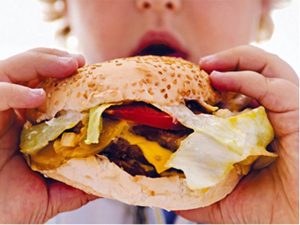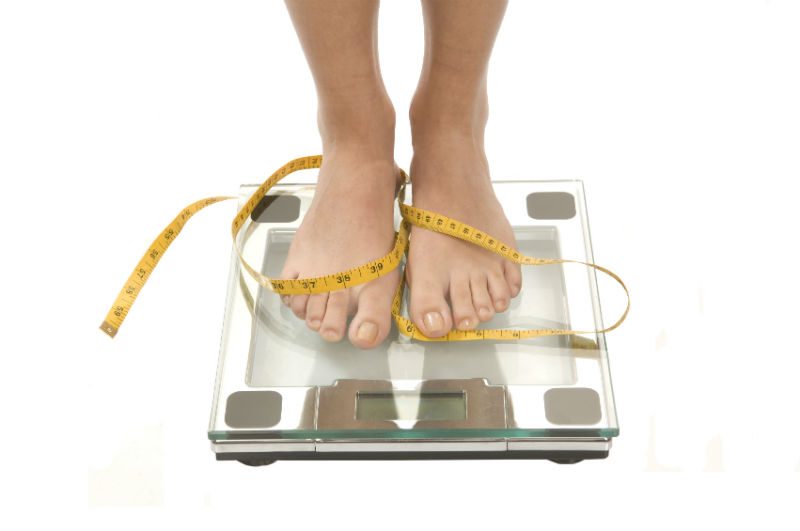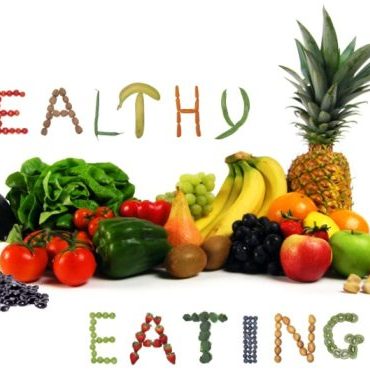 Answers for what obesity is and contributing factors.
Answers for what obesity is and contributing factors.
Can someone clarify what the right diet for me would be?
I am 58 years old and 107 kg. I have arthritis in my knees and back, irritable bowel syndrome, fatty liver and I are fructose intolerant. My question is which diet should I follow as I find fruit and nuts give me severe cramps and diarrhoea. I am struggling to lose weight. A typical days diet would be a poached egg on 1 slice of toast and a white coffee for breaky. A salad of tomato, cucumber, olives, mushrooms and tuna for lunch and stir fry veggies with either chicken or lean meat for dinner. I am not a snacker so I don’t eat morning or afternoon tea and I don’t have a sweet tooth. I don’t do a lot of exercise due to my arthritis.
Your intake appears very good to lose weight. You must remember that when you are 58 years old your metabolism is very slow so portion sizes are extremely important. You might not snack between meals but you may be eating too much at each meal. Following the FODMAP diet is good for you and it appears that you have managed that alone. Do you get any bloating or diarrhoea on the diet you are following?
Do you consume any alcohol? Have you consulted a gastroenterologist to check your Irritable Bowel Syndrome and your fructose intolerance?
I would suggest you add fish to your diet as Omega3’s which are found in fish are very healthy and good for arthritis. You diet looks deficient in calcium which is a worry at this age when bone density tends to drop. You can eat lactose-free yoghurt and drink lactose-free milk.
You should try and do some exercise to keep your joints lubricated. With arthritis, you should still be moving. Water aerobics is excellent and it is offered at many centres. Tai Chi is gentle and good for joints and balance. Exercise is essential to maintain muscle tone and bone mass and to move your joints.
I suggest you consult an Accredited Practising Dietitian to have the quantities you are eating checked and to ensure you are getting all your nutrients.
 What factors contribute to obesity?
What factors contribute to obesity?
Obesity occurs when you eat and drink more calories/kilojoules than you burn through exercise and normal daily activities. Your body stores these extra calories/kilojoules as fat. Obesity usually results from a combination of causes and contributing factors, including:
Genetics. Your genes may affect the amount of body fat you store and where that fat is distributed. Genetics may also play a role in how efficiently your body converts food into energy and how your body burns calories/kilojoules during exercise. Even when someone has a genetic predisposition, environmental factors ultimately make you gain more weight.
Family lifestyle. Obesity tends to run in families. That’s not just because of genetics. Family members tend to have similar eating, lifestyle and activity habits. If one or both of your parents are obese, your risk of being obese is increased. Your parent’s habits become family habits.
Inactivity. If you’re not very active, you don’t burn as many calories/kilojoules. With a sedentary lifestyle, you can easily take in more calories/kilojoules every day than you burn off through exercise and normal daily activities.
Unhealthy diet and eating habits. A diet that’s high in calories, lacking in fruits and vegetables, full of fast food, missing breakfast and laden with high-calorie beverages and oversized portions contributes to weight gain.
Quitting smoking. Quitting smoking is often associated with weight gain. And for some, it can lead to enough weight gain that the person becomes obese. In the long run, however, quitting smoking is still a greater benefit to your health than continuing to smoke.
Pregnancy. During pregnancy, a woman’s weight necessarily increases. Some women find this weight difficult to lose after the baby is born. This weight gain may contribute to the development of obesity in women.
Lack of sleep. Not getting enough sleep or getting too much sleep at night can cause changes in hormones that increase your appetite. You may also crave foods high in calories and carbohydrates, which can contribute to weight gain.
Certain medications. Some medications can lead to weight gain if you don’t compensate through diet or activity. These medications include some antidepressants, anti-seizure medications, diabetes medications, antipsychotic medications, steroids and beta-blockers.
Age. Obesity can occur at any age, even in young children. But as you age, hormonal changes and a less active lifestyle increase your risk of obesity. In addition, the amount of muscle in your body tends to decrease with age. This lower muscle mass leads to a decrease in metabolism. These changes also reduce calorie/kilojoule needs and can make it harder to keep off excess weight. If you don’t control what you eat and consciously become more physically active as you age, you’ll likely gain weight.
Social and economic issues. Certain social and economic issues may be linked to obesity. You may not have safe areas to exercise, you may not have been taught healthy ways of cooking or you may not have money to buy healthier foods. In addition, the people you spend time with may influence your weight — you’re more likely to become obese if you have obese friends or relatives.
Medical problems. Obesity can rarely be traced to a medical cause, such as Prader-Willi syndrome, Cushing’s syndrome, and other diseases and conditions. Some medical problems, such as arthritis, can lead to decreased activity, which may result in weight gain.
Even if you have one or more of these risk factors, it doesn’t mean that you’re destined to become obese. You can counteract most risk factors through diet, physical activity and exercise, and behaviour changes.
 What is Obesity?
What is Obesity?
An obese person has accumulated so much body fat that it might have a negative effect on their health. If a person’s body weight is at least 20% higher than it should be, he or she is considered obese. If your Body Mass Index (BMI) is between 25 and 29.9 you are considered overweight. If your BMI is 30 or over you are considered obese.
The BMI is a statistical measurement derived from your height and weight. Although it is considered to be a useful way to estimate healthy body weight, it does not measure the percentage of body fat. The BMI measurement can sometimes be misleading – a muscleman may have a high BMI but have much less fat than an unfit person whose BMI is lower. However, in general, the BMI measurement can be a useful indicator for the ‘average person.
What is the relationship between alcohol and bone health?
Alcohol negatively affects bone health for several reasons. To begin with, excessive alcohol interferes with the balance of calcium, an essential nutrient for healthy bones. It also increases parathyroid hormone levels, which in turn reduce the body’s calcium reserves. Calcium balance is further disrupted by alcohol’s ability to interfere with the production of vitamin D, a vitamin essential for calcium absorption.
In addition, chronic heavy drinking can cause hormone deficiencies in men and women. Men with alcoholism tend to produce less testosterone, a hormone linked to the production of osteoblasts (the cells that stimulate bone formation). In women, chronic alcohol exposure often produces irregular menstrual cycles, a factor that reduces estrogen levels, increasing the risk for osteoporosis. Also, cortisol levels tend to be elevated in people with alcoholism. Cortisol is known to decrease bone formation and increase bone breakdown.
Because of the effects of alcohol on balance and gait, people with alcoholism tend to fall more frequently than those without the disorder. Heavy alcohol consumption has been linked to an increase in the risk of fracture, including the most serious kind—hip fracture. Vertebral fractures are also more common in those who abuse alcohol.
Is it necessary to give Vitamin D to fully breastfed babies?
The American Academy of Pediatrics recommends that all babies receive routine vitamin D supplementation (400 IU per day) due to decreased sunlight exposure and an increase in rickets. In Australia, this is not always the case as some babies do get enough sunlight. Some mothers do cover their baby’s with sunscreen or clothing.
The babies who do need these supplements need them due to a lack of sufficient sunlight. Factors that put your breastfed baby at risk for vitamin D deficiency (rickets) are:
- Baby has very little exposure to sunlight. For example: if you live in a far northern latitude if you live in an urban area where tall buildings and pollution block sunlight if the baby is always completely covered and kept out of the sun, if the baby is always inside during the day, or if you always apply high-SPF sunscreen.
- Both mother and baby have darker skin and thus require more sun exposure to generate an adequate amount of vitamin D. Again, this is a “not enough sunlight” issue – the darker your skin pigmentation, the greater the amount of sun exposure needed. There is not much information available on how much more sunlight is needed if you have medium or darker toned skin.
- Mother is deficient in vitamin D – there is increasing evidence in the last few years indicating that vitamin D deficiency is becoming more common in western countries. The amount of vitamin D in breast milk depends upon mom’s vitamin D status. If the baby gets enough sunlight, the mom’s deficiency is unlikely to be a problem for baby. However, if baby is not producing enough vitamin D from sunlight exposure, then breast milk will need to meet a larger percentage of baby’s vitamin D needs. If mom has minimal exposure to sunlight (see above examples) and is not consuming enough foods or supplements containing vitamin D, then she may be vitamin D deficient.
The best way to get vitamin D, the way that our bodies were designed to get the vast majority of our vitamin D, is from sun exposure. Depending upon where you live, going outside regularly is often all that is required for you or your baby to generate adequate amounts of vitamin D. (Keep in mind that there is a concern of sunburn and increased risk of skin cancer with too much sun exposure, however.)
The primary source of vitamin D for babies, other than sunlight, is the stores that were laid down in the baby’s body prior to birth. Because mom’s vitamin D status during pregnancy directly affects baby’s vitamin D stores at birth and particularly during the first 2-3 months, it is very helpful for pregnant women to make sure they are getting enough vitamin D.
Adding a vitamin D supplement to mom’s diet and/or exposure to ultraviolet light will increase the amount of vitamin D in her breast milk. As long as mom is not vitamin D deficient, her breast milk will have the right amount of vitamin D. However, babies were “designed” to get only part of their vitamin D from breast milk and the remainder from sun exposure – what if the baby does not get a minimum amount of sun? A 2004 study [Hollis & Wagner 2004] determined that supplementing the mother with 2000-4000 IU vitamin D per day safely increased mother’s and baby’s vitamin D status: the 2000 IU/d dose resulted in a limited improvement, and “A maternal intake of 4000 IU/d could achieve substantial progress toward improving both maternal and neonatal nutritional vitamin D status.” A Finnish study [Ala-Houhala 1986] showed that supplementing the mother with 50 µg (2000 IU) vitamin D per day was as effective for maintaining the baby’s vitamin D levels as supplementing the baby with 10 µg (400 IU) per day.

